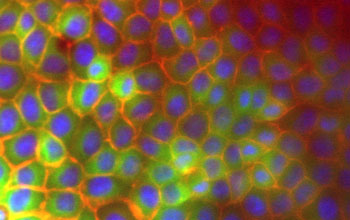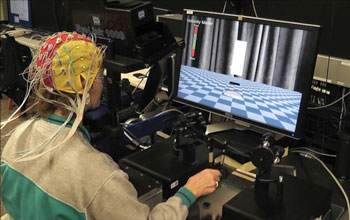All Images
News Release 11-208
Insights From Biological World to Inspire New Engineering Capabilities
Interdisciplinary teams to explore quietly powerful biological signals and the intersection between minds and machines
This material is available primarily for archival purposes. Telephone numbers or other contact information may be out of date; please see current contact information at media contacts.

Microbes from three kingdoms live symbiotically within the lower termite gut, where they coordinate chemical processes that are beyond the capability of any one organism. The composition and function of the microbial community changes with even tiny variations in the physical and chemical habitat of the termite gut. A team at the University of Connecticut will investigate the changing capabilities of the termite gut community to break down various carbon sources, such as lignocelluloses, and its self-regulation through a complex signaling network. To do so, the researchers will systematically replicate micro-scale physical and chemical features of a lower termite gut using engineered microhabitats. By understanding microorganisms' signaling processes, it may be possible to manipulate microbial communities and harness their capabilities for chemical production on an industrial scale.
Credit: Gary Alpert, Harvard University, Bugwood.org
Download the high-resolution JPG version of the image. (90 KB)
Use your mouse to right-click (Mac users may need to Ctrl-click) the link above and choose the option that will save the file or target to your computer.

Epithelial cells are imaged on a custom strain array device developed to stretch cells for an EFRI project at Stanford University. This project will investigate mechanical interactions between cells that are instrumental to basic processes of life and yet remain poorly understood. In multicellular tissues, the effects of mechanical forces such as stress and strain are focused on junctions that connect the cells together. The team will create novel engineering devices to visualize and characterize how junctions between living cells change as force is applied. They will also use a new class of molecular force sensors to directly visualize the transmission of molecular-scale mechanical force through cell junctions. With these methods, devices and probes, this project aims to transform understanding of the thresholds and mechanisms for environmental adaptation and remodeling of multicellular systems.
Credit: Joo Yong Sim, Nicolas Borghi, James Nelson and Beth Pruitt, Stanford University
Download the high-resolution JPG version of the image. (255 KB)
Use your mouse to right-click (Mac users may need to Ctrl-click) the link above and choose the option that will save the file or target to your computer.

With an NSF EFRI award, researchers at Emory University and the Georgia Institute of Technology will develop a "therapeutic robot" to help rehabilitate and improve motor skills in people with mobility problems. The award was granted to: (left to right) Emory Assistant Professor of Medicine (geriatrics) Madeleine Hackney, Coulter Department of Biomedical Engineering at Georgia Tech and Emory University assistant professor Charlie Kemp, Georgia Tech School of Interactive Computing assistant professor Karen Liu, and Coulter Department associate professor Lena Ting. Ting serves as principal investigator on the project.
Credit: Georgia Tech/Gary Meek
Download the high-resolution JPG version of the image. (1.1 MB)
Use your mouse to right-click (Mac users may need to Ctrl-click) the link above and choose the option that will save the file or target to your computer.

In a simulation of bacterial micro-colony growth and cell-cell communication, the cells are programmed to emit signalling molecules and respond to the concentration of those molecules by producing fluorescent proteins. Such behaviors could form the basis of a programmable developmental system for cells, in which single cells grow into complex patterns in a prescribed manner. The genetic implementation of such artificial development programs in actual cells is the goal of an EFRI project involving researchers at William Marsh Rice University and the University of Wasington.
Credit: Eric Klavins, University of Washington
Download the high-resolution JPG version of the image. (161 KB)
Use your mouse to right-click (Mac users may need to Ctrl-click) the link above and choose the option that will save the file or target to your computer.

Researchers at the University of California at San Diego aim to create an innovative, non-invasive approach for rehabilitation of Parkinson's disease patients. They will create a system that offers realistic sensory feedback to stimulate beneficial neurological changes. Their study of visually mediated neural motor control will involve virtual grasping and motion capture with force feedback, eye tracking and recording of EEG brain activity in Parkinson's disease patients.
Credit: Howard Poizner, Institute for Neural Computation, University of California, San Diego
Download the high-resolution JPG version of the image. (90 KB)
Use your mouse to right-click (Mac users may need to Ctrl-click) the link above and choose the option that will save the file or target to your computer.


